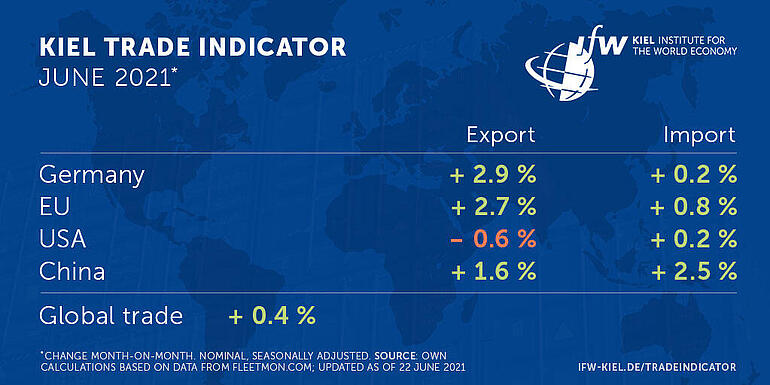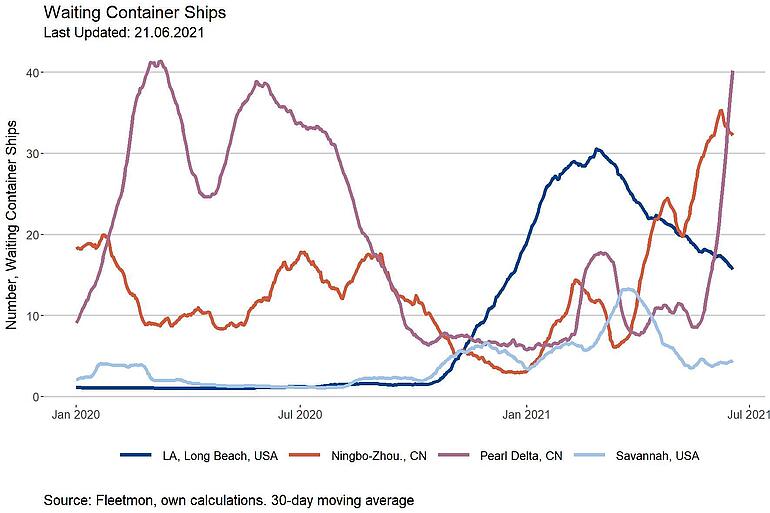News
Kiel Trade Indicator 06/2021: Congestion of container ships increases, but world trade intact

For Germany, the Kiel Trade Indicator for June 2021 signals an increase in exports of 2.9 percent, while imports are likely to be stagnant with an indicator value of +0.2 percent (nominal, seasonally adjusted).
The picture is similar for the EU, with exports expected to increase (+2.7 percent) and imports to remain in the black (+0.8 percent).
"The slight increase in exports from Germany and the EU can be seen as a normal countermovement to the negative values last month," says Vincent Stamer, head of Kiel Trade Indicator.
For the US, only moderate swings are expected for both imports and exports, and thus also a tendency toward stagnation (exports -0.6 percent; imports +0.2 percent).
For China's trade, the Kiel Trade Indicator shows positive signs in both directions despite the shipping crisis (exports +1.6 percent; imports +2.5 percent).
Total world trade in June is expected to be pretty much at the level of the previous month (+0.4 percent).

"The number of waiting container ships in China's Pearl River Delta is increasing rapidly. In the past four weeks, Yantian Port has shipped just over 40 percent of its usual container volume. Fewer containers than usual are also leaving the port of Shenzhen. The mega ports of Shanghai and Ningbo, however, are not yet experiencing any slumps. This is one reason why the Kiel Trade Indicator is currently showing positive bottom-line values for China's trade, global trade and import values for the countries mentioned. However, if the Chinese shipping crisis is getting worse, this could change," says Stamer.
The next update of the Kiel Trade Indicator will take place on July 5 (without press release) and on July 21 (with press release).
For more information on the Kiel Trade Indicator and forecasts for all 75 countries, visit www.ifw-kiel.de/tradeindicator.
About the Kiel Trade Indicator
The Kiel Trade Indicator estimates trade flows (imports and exports) for 75 countries worldwide, the EU and world trade as a whole. It is based on the evaluation of ship movement data in real time. An algorithm programmed at the Kiel Institute uses artificial intelligence to analyze the data and translates the ship movements into nominal, seasonally adjusted growth figures compared with the previous month.
We update the data twice a month. Around the 20th (with press release) for the current and the following month and around the 3rd (without press release) for the previous and the current month.
Arriving and departing ships are recorded for 500 ports worldwide. In addition, ship movements in 100 maritime regions are analyzed and the effective utilization of container ships is derived from draught information. Country-port correlations can be used to generate forecasts, even for countries without their own deep-sea ports.
Compared to previous leading trade indicators, the Kiel Trade Indicator is available much earlier, is much more comprehensive, relies on a uniquely large database using big data, and has a low statistical error by comparison. The algorithm of the Kiel Trade Indicator uses machine learning, so that the quality of the forecast continues to improve over time.
